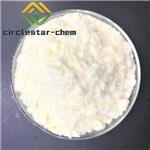- 3-Methylxanthine
-

- $0.00 / 1kg
-
2025-03-18
- CAS:1076-22-8
- Min. Order: 1kg
- Purity: 98
- Supply Ability: 1000
|
| | 3-Methylxanthine Basic information |
| | 3-Methylxanthine Chemical Properties |
| Melting point | >300 °C (lit.) | | Boiling point | 294.33°C (rough estimate) | | density | 1.4434 (rough estimate) | | refractive index | 1.6700 (estimate) | | storage temp. | 2-8°C | | solubility | DMSO (Slightly, Heated), Methanol (Slightly) | | form | Solid | | pka | pK1:8.10;pK2:11.3 (25°C) | | color | White to Pale Beige | | Water Solubility | Insoluble in water. | | BRN | 180944 | | InChIKey | GMSNIKWWOQHZGF-UHFFFAOYSA-N | | CAS DataBase Reference | 1076-22-8(CAS DataBase Reference) |
| Hazard Codes | Xn,T+ | | Risk Statements | 22-26/27/28 | | Safety Statements | 22-24/25 | | WGK Germany | 1 | | RTECS | ZD8750000 | | HS Code | 29335990 | | Toxicity | LD50 intraperitoneal in mouse: 894mg/kg |
| | 3-Methylxanthine Usage And Synthesis |
| Description | 3-Methylxanthine is one of the metabolites of theophylline. After oral intake, approximately 36% is excreted in the
urine as 3-methylxanthine, 40% as 1,3-dimethyluric acid
and 17% as 1-methyluric acid. 3-methylxanthine (3MX) has been assessed as an adenosine antagonist and produces the same maximal relaxation of guinea pig tracheal muscle as does. 3MX is also used to examine conformational heterogeneity in RNA aptamers and riboswitches[1-2]. | | Chemical Properties | Light yellow powder | | Uses | 3-Methylxanthine is a Xanthine derivative with diuretic, cardiac stimulant and smooth muscle relaxant activities; isomeric with theobromine.They can also act as Bronchodilator. | | Definition | ChEBI: 3-methyl-9H-xanthine is a 3-methylxanthine tautomer where the imidazole proton is located at the 9-position. It has a role as a metabolite. It is a tautomer of a 3-methyl-7H-xanthine. | | Biosynthesis | As the primary intermediate of theobromine degradation, 3-methylxanthine might be degraded by A. tamarii PT-7 and other candidate isolates in the liquid culture. The accumulation of 3-methylxanthine increased along with theobromine degradation since it was detected in the liquid culture after cultivation for 24?h. Over 6 days of cultivation of A. sydowii PT-2, 3-methylxanthine was produced and increased significantly (p?<?0.05) with an increasing initial theobromine concentration, respectively, showing a linear relationship between theobromine degradation and 3-methylxanthine accumulation[3]. | | General Description | 3-Methylxanthine, a metabolite of theophylline, was quantitated in rat plasma by a sensitive LC-MS/MS method. | | Purification Methods | Crystallise it from water. [Beilstein 26 II 263, 26 III/IV 2329.] | | References | [1] R. Sellman, &P. J. Klemi. “Kidney toxicity of 3-methylxanthine in the rat.” Journal of Applied Toxicology 4 6 (1984): 304–307.
[2] K. H. Algharrawi. “Direct conversion of theophylline to 3-methylxanthine by metabolically engineered E. coli.” Microbial Cell Factories 14 1 (2015).
[3] Binxing Zhou. “3-Methylxanthine production through biodegradation of theobromine by Aspergillus sydowii PT-2.” BMC Microbiology (2020): 269. |
| | 3-Methylxanthine Preparation Products And Raw materials |
|